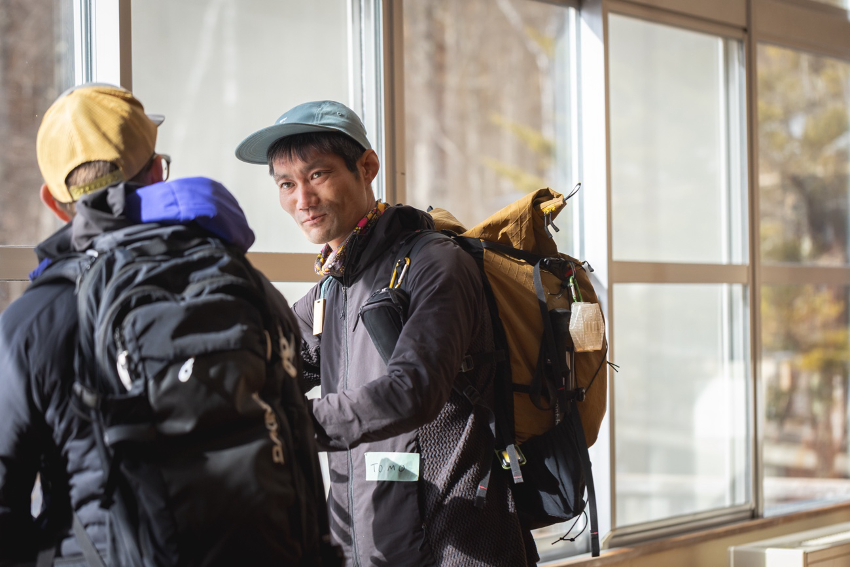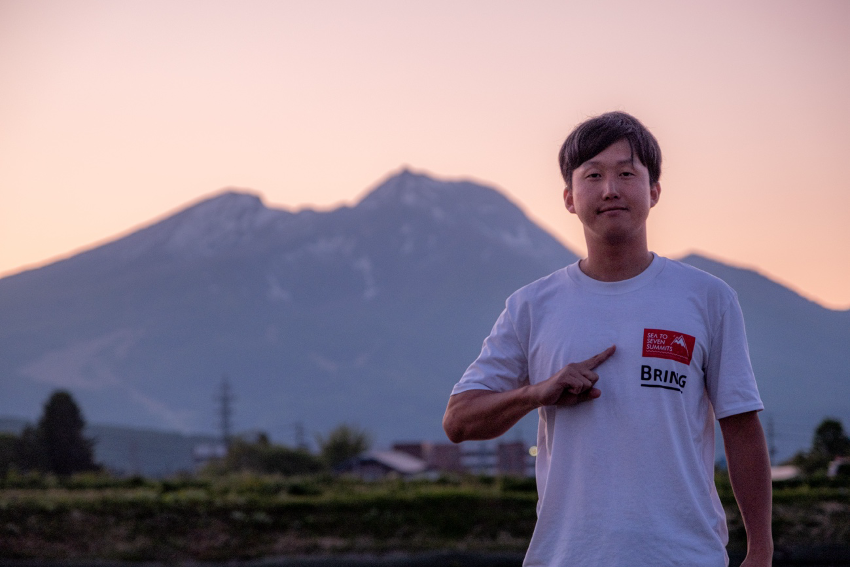
Occupation: Adventurer, Moving to Nagano Prefecture Because I Longed for a Robust Life
I moved about three years ago, and now live in Shinanomachi in the northern part of Nagano Prefecture. When I traveled in Alaska some time ago, I saw people there building log houses and hunting, providing themselves with all the necessities of life, and I became enamored of that robust lifestyle. The charms of Shinanomachi are the beautiful scenery you can see looking out over Lake Nojiri, and living close to the mountains. I love setting out mountain climbing with the summit as a goal, but since moving here, I’ve been picking edible wild plants and mushrooms, getting a hunting license, and expanding the ways I can enjoy the mountains.
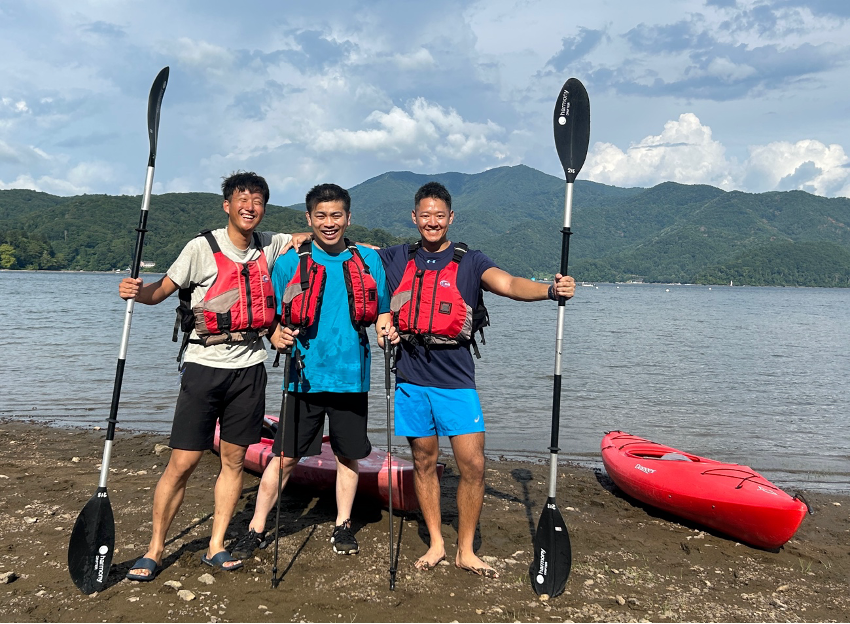
My main activities are as an adventurer. Since 2018, I’ve been tackling the “Sea to Seven Summits” project, which involves going from sea level to the top of the highest peak on all seven continents under your own power, something no one has accomplished yet. By way of illustration, in the case of Japan, it would mean starting along the coast in Shizuoka Prefecture and aiming for the summit of Mt. Fuji. The project combines the objectives of “Seven Summits”, which aims to conquer the highest peaks on all seven continents, and “Sea to Summit”, which aims to go from sea level to the summit of a mountain.
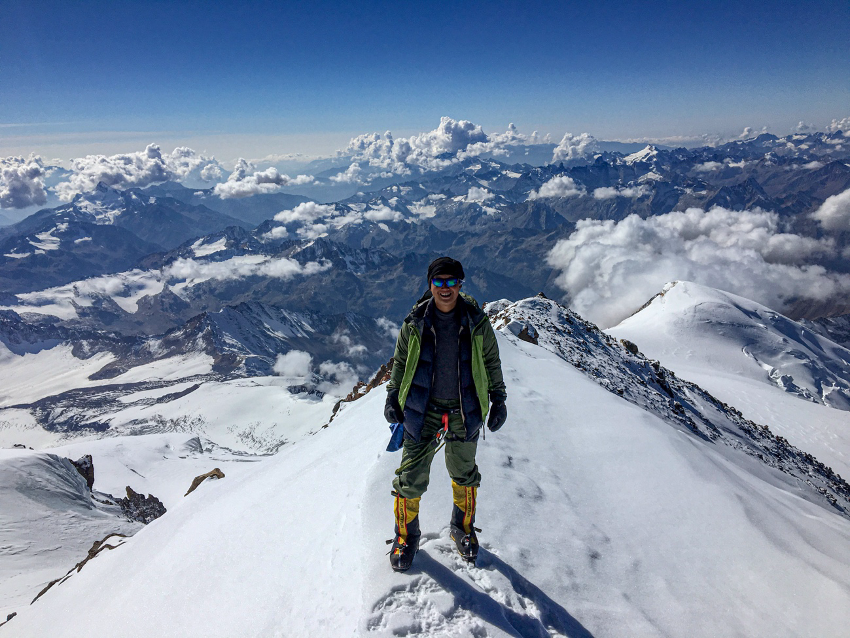
It was sort of a personal thing that first got me interested in it, as I learned that the first Sea to Summits completed on Mt. Everest happened to be on the very day I was born. I’ve always liked mountain climbing overseas, outdoor activities, and traveling, so when I looked into it and got that information, it felt like destiny. The first one I challenged was the highest peak in Australia, Kosciuszko. As I headed for the summit from the sea, surprisingly most of the way I went by normal countryside roads. I was in a barren, desert-like location when my canteen ran dry, and when I explained at a house that I wanted them to give me some water, the people there gave me breakfast and we had a great time talking about our families and countries. Realizing how interesting both interacting with the people I met thanks to undertaking this and learning about other cultures was, I wanted to challenge more of them.
Recently, I made plans to go to Denali, the highest peak in North America in 2022, and for 49 days from March to May I challenged it with my compatriots. Normally you begin mountain climbing there after going to the base camp at 2,000 m by plane, but we went there under our own power pulling sleds and set off from the coast.
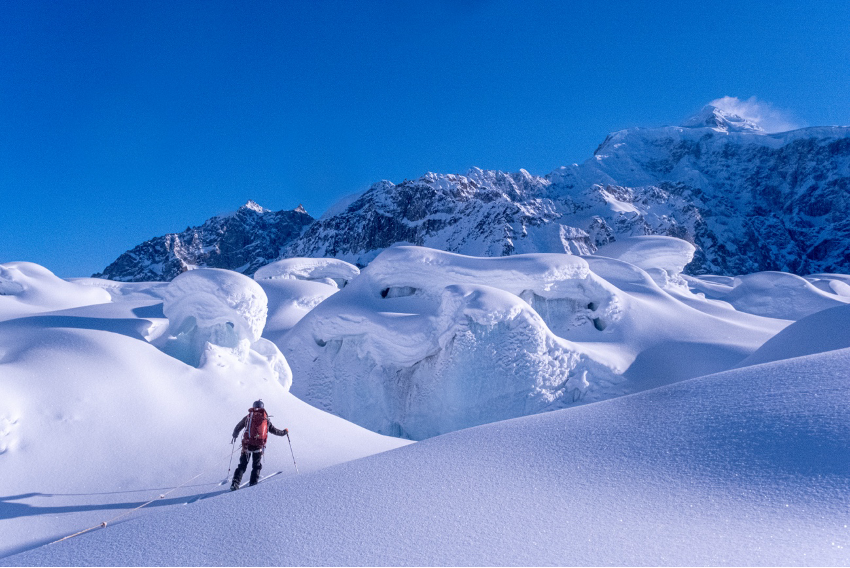
Nearly falling into crevasses, encountering grizzly bears, at times we came face to face with the true severity of nature, but I feel that’s the real thrill of adventuring.
All that remains are to conquer Everest and the highest peak in Antarctica. This is my goal as an adventurer.
Going from Company Man to Guide Showing the Charms of Japan
As I do my activities as an adventurer now, I’ve also settled into a life centered around outdoor activities, forest therapy and activities around Shinanomachi, and being a mountain climbing guide and on the patrol at a ski resort.
It is thanks to my mother’s influence that I came to like mountains and nature. Though I was born in Saitama Prefecture, my mother’s family is in Tokamachi City, Niigata Prefecture, and she often brought me skiing and hiking there.
My first serious mountain climbing experience was climbing Kilimanjaro to celebrate graduating from the university. “Kilimanjaro is the highest mountain an amateur can climb,” my friend suggested, and it was all well and good that I challenged it so casually, but it was quite harsh once I got there. After I got back to Japan, I thought I’d never climb Kilimanjaro again, but with the passage of time that trip has gradually turned into a good memory. The stunning scenery and sense of achievement were great precisely because it was so difficult. Later, a joy I had never felt in my travels slowly bubbled up in me.
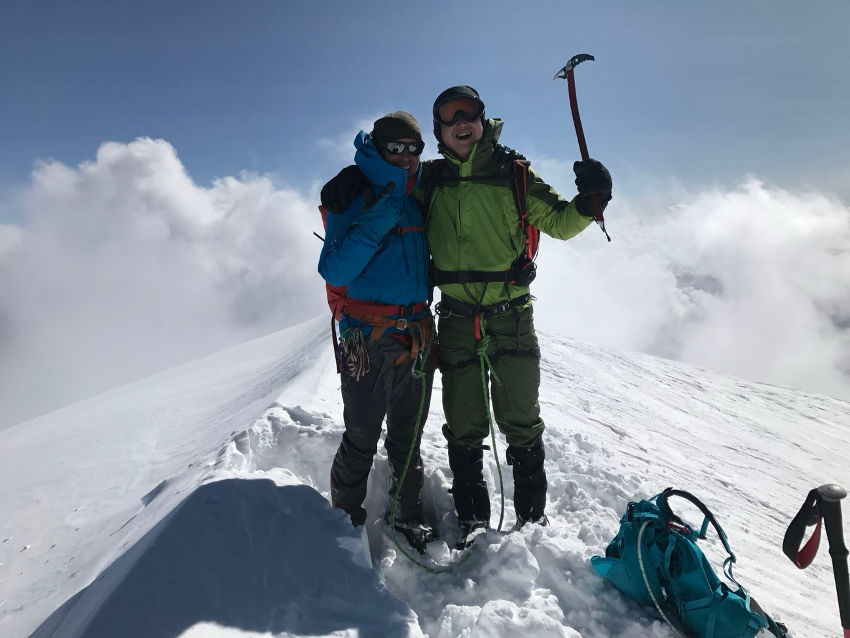
I went to work in the financial sector after graduating from the university, and beside overseas assignments, I started going to climb mountains overseas such as the European Alps, the Andes, and mountains in Southeast Asia. I can still recall how cool and reassuring the local guides I met on those occasions were, and I feel it was thanks to these experiences that I got good at communicating in English. My full-fledged mountain climbing career is just under 10 years, and it was about three years ago I started working as a guide, but now that I’m in the supporting position as a guide, I want to show people the charm of Japan.
Sharing the Emotion Through Polite Communication
As a guide, I value having fun and being moved right along with the clients. I always have my antenna up so I’ll be able to introduce spots and scenery I personally feel are really great.
For example, in the case of flowers and plants, I introduce them along with my own discoveries and perception of their smell, while in the case of scenery, I purposely take a back way when guiding them to some stunning scenery I particularly like. An adventure is something an individual works at diligently, but being able to be there making good use of the knowledge I’ve gained, the charm of the mountains, and ways to spend time there safely makes being a guide worthwhile.
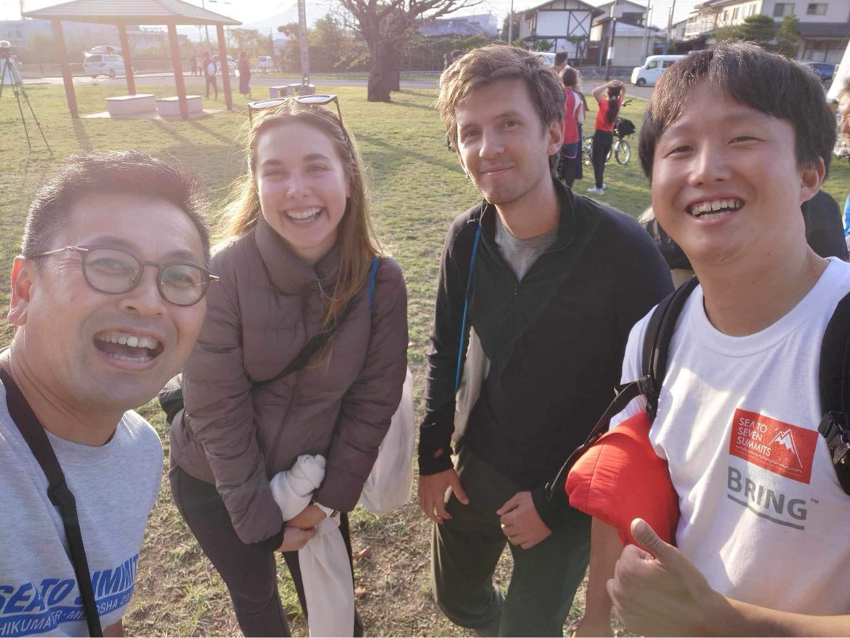
When communicating, I make it a point to be conscious of the background of the person I’m addressing. In different countries, different people are famous and different things are popular. Many things can’t be explained in the same way you would to a Japanese person. The same holds true for little jokes. If it’s a country where I lived for work or school, I may have some knowledge of it, but generally I begin by researching what kind of country they’re from when I get the client information.
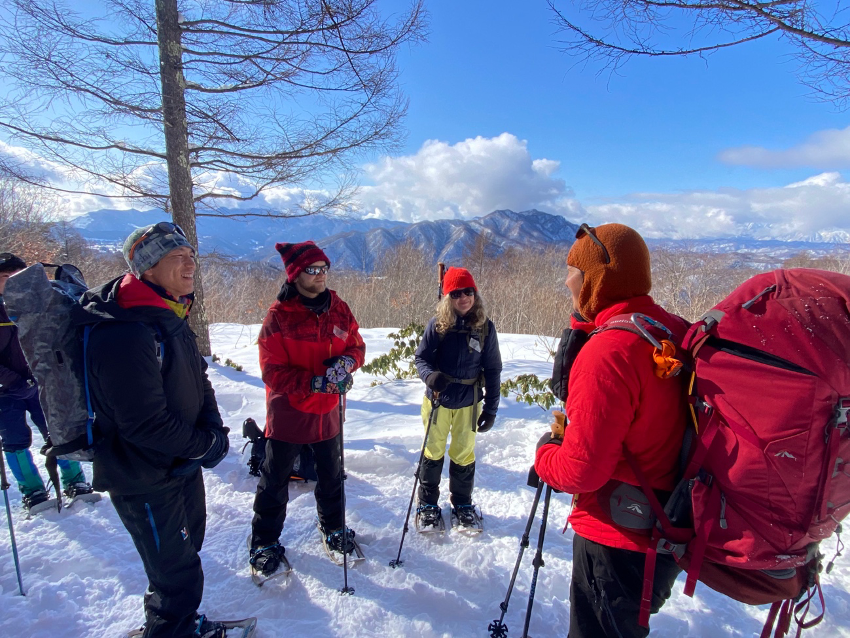
I learned many things in this training, especially about wilderness first aid, and strongly felt the need to improve my skills. Though I’ve taken training sessions in the basics up until now, I think this has made me even more about it. Being taught knowhow by experienced and skilled mountain guides who’ve been doing this longer, hearing the tricks of the trade from interpreting pros, and getting to meet my compatriots have been a treasure to me.
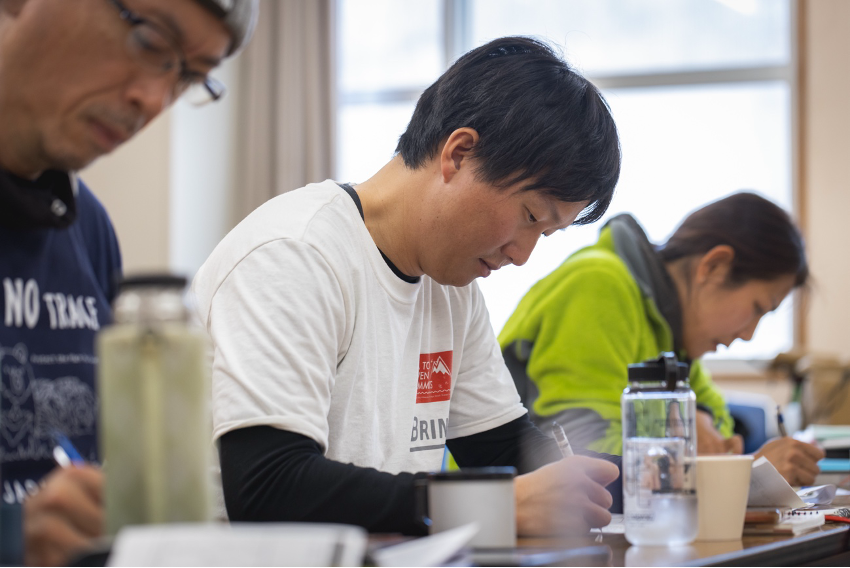
From a skills standpoint, the communication abilities of everyone taking part have been fantastic. That’s true of even the smallest gestures, such as calling to someone from behind while they’re walking to create a fun atmosphere, and there were so many techniques I want to incorporate.
Beauty that Changes with the Four Seasons and a Variety of Activities are the Town’s Charms
In the future, I’d like to introduce people to the nature of Nagano, which can’t be experienced in big cities like Tokyo, Kyoto, or Osaka. Rather than something extreme geared toward those who say “I really love outdoor activities!” I’m planning to guide something for those who aren’t yet familiar with outdoor activities. For example, I want to put more emphasis on activities that aren’t too physically intensive, such as cycling around town on a mountain bike or trying hiking in snow shoes in Togakushi.
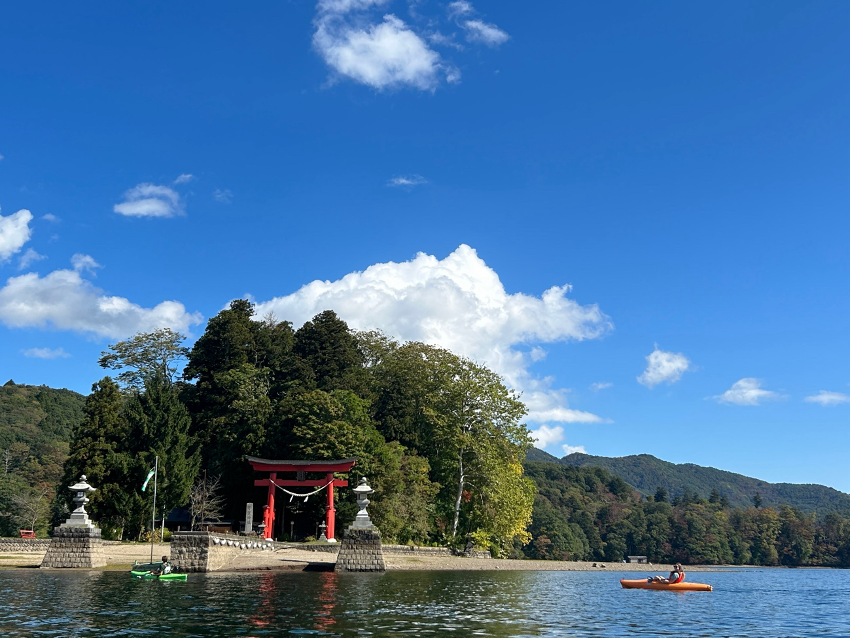
Forest therapy, which I mainly do now, is a program prepared to put all five senses to work out in the forest to reclaim the sensations humans are supposed to have. Smelling the scents of plants, putting things in your mouth, touching things, listening closely for the sounds of nature. I have each of them choose a location they like, and I also value the time they spend there alone. For example, it’s okay for them to only do one thing, so I recommend they try closing their eyes and lying down as a way to pass the time. A detox far from the daily clamor, using the power of the forest to offer an opportunity to relax and be refreshed. I haven’t actually done it yet, but picking mushrooms and edible wild plants are both things I would like to incorporate in the future. There are many activities in each season that I’d like to tie together to enjoy in combinations, like traveling around the mountains or kayaking on Lake Nojiri.
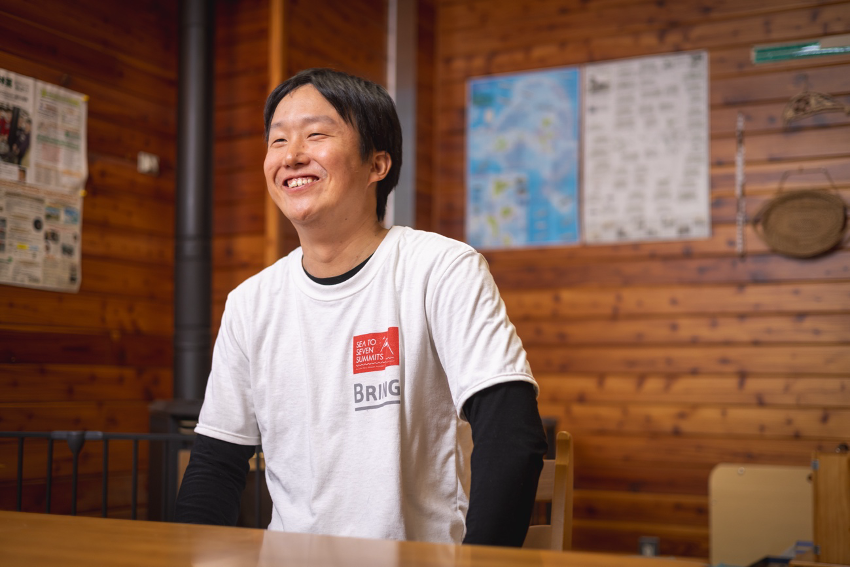
My favorite locations are Ojika Pond in Kurohime Highland and the area around Togakushi Shrine. At Ojika Pond, there are a number of courses around it, including one that’s 1.2 km, so it’s an easy spot for walking even for beginners.


